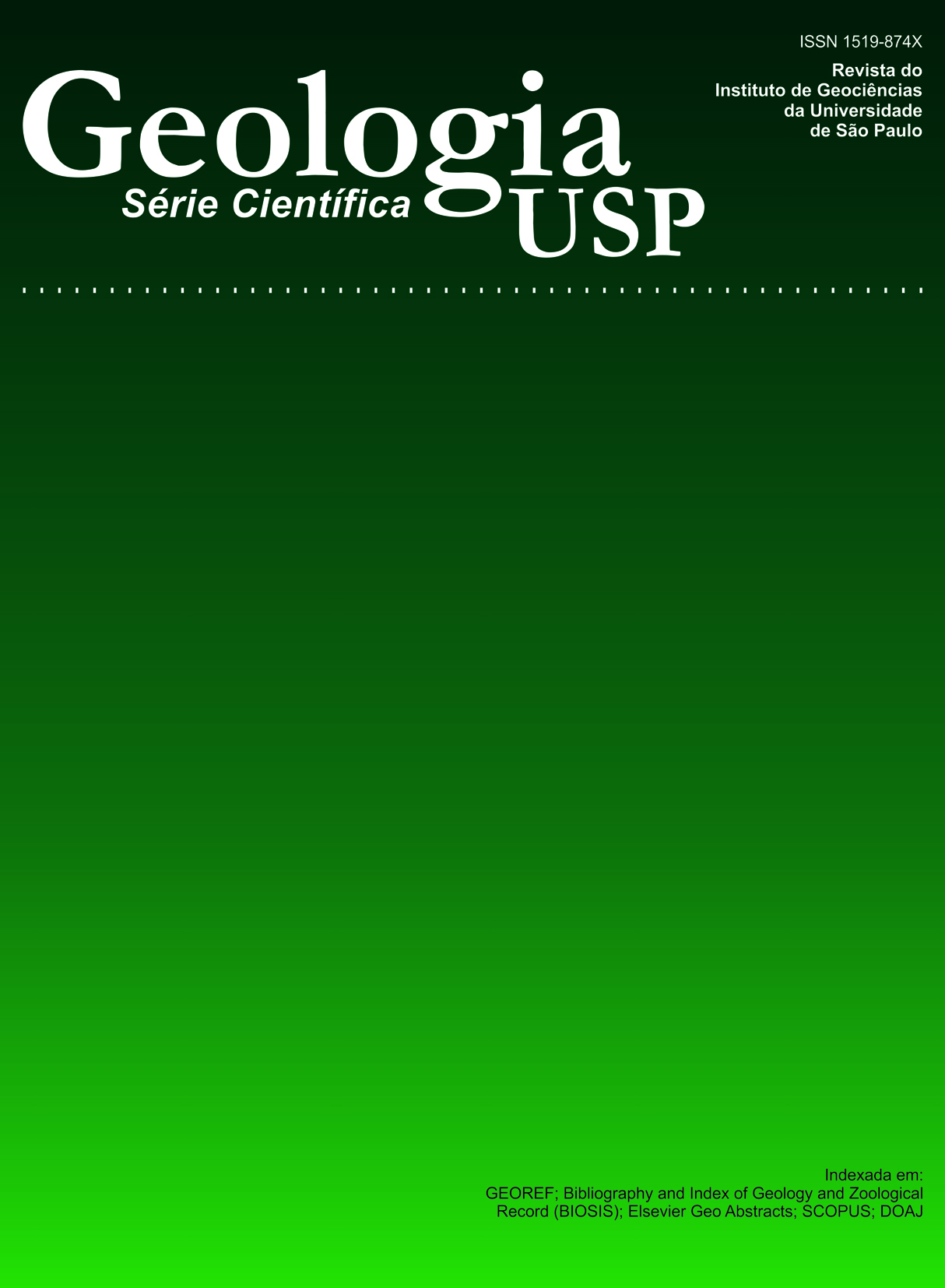The erosional and angular unconformity between the Chapada Diamantina and Bambuí (Una) groups at the Mirangaba sheet - Bahia
DOI:
https://doi.org/10.5327/Z1519-874X2012000200007Keywords:
Chapada Diamantina group, Bambuí group, Lithostratigrafic and structural relationships, Tectonics conditions, Northern limit of the São Francisco CratonAbstract
The stratigraphic relationships between the Chapada Diamantina and Bambuí (or Una) groups were practically established with the papers of J. C. Branner, a century before. Sometimes that proposed lithostratigraphy was questioned, but we do know now that these arguments were based up incomplete or inadvertent field observations. At the sheet of Mirangaba, central-northern part of Bahia, both the angular and erosional unconformity between the above-mentioned groups are exposed of a conspicuous way, according to their three dimensions, what deserves the special mention here consigned. The quartzites and conglomerates of the Chapada Diamantina group are cropping out as folded and re-fold rock units (general strike ENE-WSW) and they present features of intense superposed erosional processes. Two paleosurfaces were formed and are being exhibited, with complementary features of erosional scarpments, as well as amphitheatres, suppression of some lithostratigraphic units, testimonies-hills (quartzitic islands), etc. The lower pediplan then formed (today with summits >; 500 m) was completely covered by the limestones (Salitre Fm.), where calcilutites are predominating, presenting many algalic edifications. We are not able to affirm that the proterozoic limestone progradation have covered the higher pediplan (today with summits ca. 1,000 m), but there are some testimonies-hills of limestone presenting tops up to 600 m, clearly above the present and predominating surface (Neogene, Velhas Surface), so reiterating that an intense erosional dissecation has occurred (Cenozoic in age) of the limestones. These limestones present monotonous subhorizontal structural attitudes, with the presence of some open folding (ondulations) when they are near of the contacts with the subjacent quartzites. Quite often these limestones were submitted to local ruptural displacements. The polyphasic deformation of the subjacent Chapada Diamantina group is being hypothetically attributed to the Brazilian cycle (as foreland domain of the Riacho do Pontal fold system), but this proposed condition needs to be better constrained, as well as the northern limit of the São Francisco Craton (to the north) demands to be reviewed. The basal diamictites of the Bambuí Group (Bebedouro Fm.) is only locally cropping out, at the southern and at the northwestern part of the area. The time interval between the deformation of the quartzites and the beginning of the limestones deposition was necessarily very long, some millions of years, and this is an obligatory target for future researches.Downloads
Download data is not yet available.
Downloads
Published
2012-08-01
Issue
Section
Articles
License
Authors who publish in this journal shall comply with the following terms:
- Authors keep their copyright and grant to Geologia USP: Série Científica the right of first publication, with the paper under the Creative Commons BY-NC-SA license (summary of the license: https://creativecommons.org/licenses/by-nc-sa/4.0 | full text of the license: https://creativecommons.org/licenses/by-nc-sa/4.0/legalcode) that allows the non-commercial sharing of the paper and granting the proper copyrights of the first publication in this journal.
- Authors are authorized to take additional contracts separately, for non-exclusive distribution of the version of the paper published in this journal (publish in institutional repository or as a book chapter), granting the proper copyrights of first publication in this journal.
- Authors are allowed and encouraged to publish and distribute their paper online (in institutional repositories or their personal page) at any point before or during the editorial process, since this can generate productive changes as well as increase the impact and citation of the published paper (See The effect of Open Access and downloads on citation impact).
How to Cite
Neves, B. B. de B., Santos, R. A. dos, & Campanha, G. A. da C. (2012). The erosional and angular unconformity between the Chapada Diamantina and Bambuí (Una) groups at the Mirangaba sheet - Bahia . Geologia USP. Série Científica, 12(2), 99-114. https://doi.org/10.5327/Z1519-874X2012000200007





